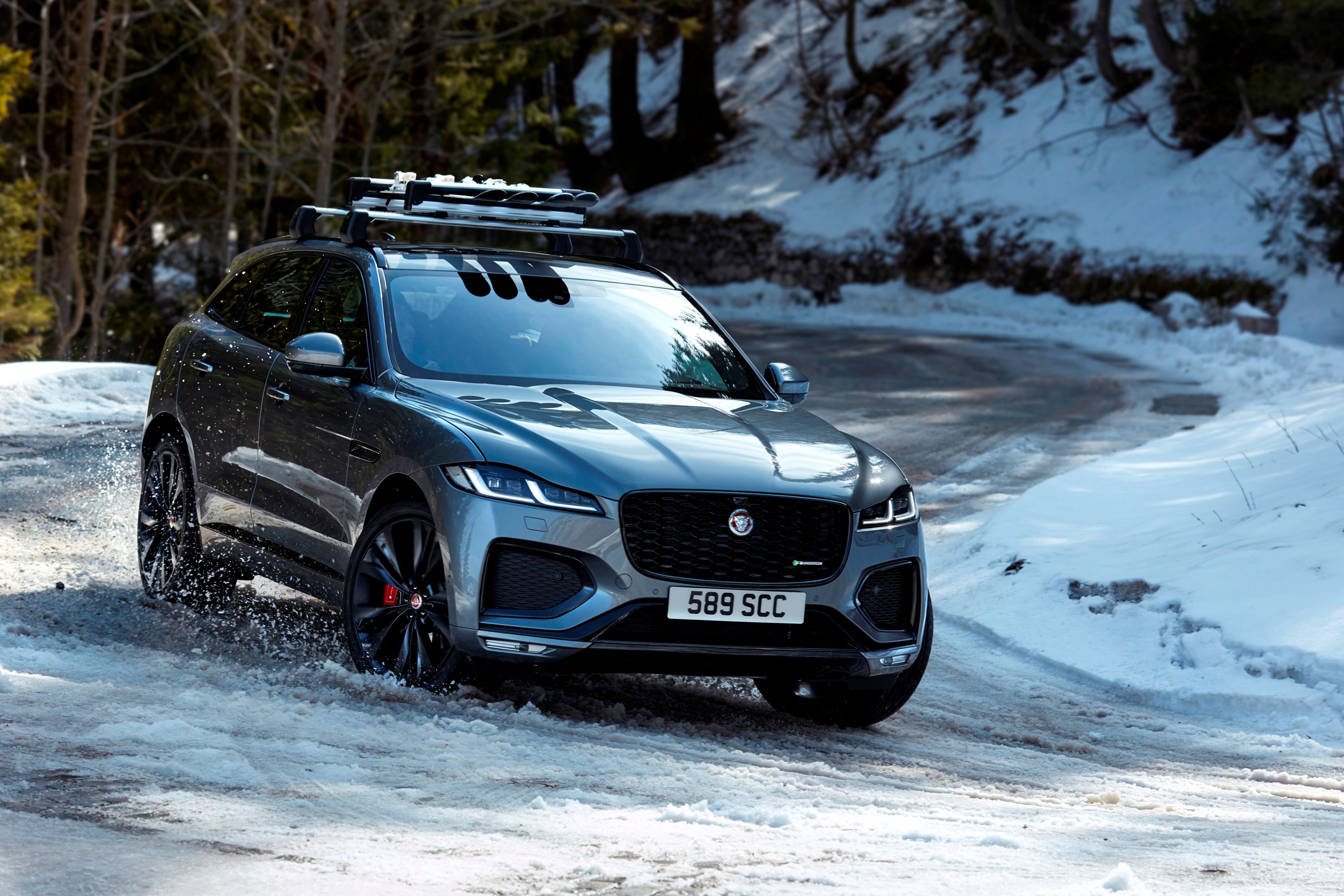2019 Jaguar F-Pace Test Drive Review: Steady As She Goes
Can you pick a luxury compact SUV based on which one you think is the prettiest?
Probably. Lots of people do, and everything in this segment hits a certain baseline these days, so there's not a huge risk in doing so.
If that's the tack you're taking, you might very well be considering the Jaguar F-Pace. Put up against the Audi Q5, BMW X3 and X4, Mercedes-Benz GLC, and Porsche Macan, the Jag would very likely win some beauty contests. In fact, its closest competitor in this regard is arguably its Land Rover cousin, the Range Rover Velar.
There's far more to this segment than meets the eye, though, especially when it comes to exactly what you're getting for your higher spend over a mainstream SUV. What's important is deciding how much you care about those factors and weighing them against the incontrovertible pull of fashion over function.
Engine, Performance & MPG: Solid Dynamics
This test drive is based on a 2018 F-Pace. The 2019s are out now, but there's functionally very little difference between the two model years. The primary one is that there's now an SVR variant available with a supercharged 5.0-liter V8 that makes 550 hp and brings the F-Pace to a top speed of 176 mph.
The much more pedestrian Prestige model featured here, priced at an MSRP of $51,600, doesn't begin to approach that. It's equipped with the 25t base engine, which is Jag's Ingenium block configured here as a 2.0-liter turbocharged four-cylinder tuned to produce 247 hp and 269 lb-ft of torque between 1,200 and 4,500 rpm, figures that are essentially in line with the entry-level Q5, X3, and GLC. It's matched with a ZF eight-speed automatic transmission and standard all-wheel drive.
Driving Impressions
What I'm more surprised to learn is that the Jag's curb weight is the lightest of this group – it comes in at 3,913 lbs to the GLC's 4,001 lbs, the Q5's 4,045 lbs, and the X3's 4,167 lbs – because it doesn't come across as such at all in the way that it drives. It feels firmly planted, very substantial, and almost truck-like in its manners. Plenty of people appreciate these qualities in an SUV and seek them out. The flip side is that the F-Pace doesn't feel as nimble as other vehicles in its class. That said, it does stay very flat and smooth most of the time, and that's without the help of an adaptive damping system. It's available, but it wasn't equipped on my tester, and I didn't miss it. Some of the F-Pace's competitors can't achieve a similar level of composure without one.
Over my week spent with the F-Pace doing a good mix of city and highway driving, I used 20.6 miles per gallon of premium fuel – not stellar, but about right relative to its class.
Interior Design, Features & Dimensions
With clean, uncluttered lines, the interior of the F-Pace makes a good first impression. The grained leather is opulent, and the four-way power seats with lumbar supports and standard heating are comfortable. A closer inspection reveals that there's more hard plastic in use here than in other cars in the segment, particularly across the top of the dashboard.
Behind the 40-20-40 split rear seat, the F-Pace has 33.5 cubic feet of cargo space. The GLC's 19.4 cubic feet doesn't even come close; the Q5 and X3 are better at 25.1 and 28.7 cubic feet respectively, but the F-Pace's slightly longer overall length of 186.3 inches helps to make it the clear leader here.
The new digital dashboard, available as part of the Technology Package for $935, is gorgeous and a vast improvement over previous Jaguar layouts. The important information is front and center and easy to glean at a glance. There is one thing about it that turned into a minor inconvenience: I pulled into a gas station needing exactly a half tank of fuel, looked down to figure out which side of the car the tank is on, misinterpreted the little fuel gauge arrow as being the one I was looking for, and ended up parked at the pump with the tank on the wrong side. This would never be an issue for anyone more than once, but as design quirks go, it gave me a chuckle.
Speaking of quirks, they become more evident as you dive into the technical side of things.
Beware The Infotainment
Jaguar's 10-inch touchscreen-driven infotainment system looks nice and comes with features like a WiFi hotspot, HD radio, and onboard navigation. It's on the slower side, but I had no issues with it on this particular week of testing.
However, on past test drives of Jaguar Land Rover products, I've been through some very buggy moments with it: pressing down on the station selector and being taken up instead, functions becoming unresponsive, the entire thing not loading at all on start-up, that sort of thing. Either not every car has these issues, or I got lucky in my time with this F-Pace. Regardless, it's something to look for on a test drive and brace yourself for if you're considering signing on the dotted line.
It's also worth noting that Jaguar's system doesn't come with Apple CarPlay or Android Auto compatibility. CarPlay is becoming more common in the luxury space, while Android Auto is harder to find (currently, Audi is the only luxury brand that supports it). If either of these features is something you're committed to having, you'll have to look elsewhere.
On a more practical note, I noticed that the engine start-stop button requires a longer press than average; a quick tap doesn't do the job. Overall, this car isn't ideal for people who like things to happen quickly.
Price & Trims
At this Prestige level, the F-Pace comes with an on-board spare tire (which is not a given these days), emergency braking, traffic sign recognition, rain-sensing wipers, adaptive speed limiter, a driver condition monitor – a feature that watches your eyes and facial movements to see if you've become drowsy or distracted and, if so, alerts you to take a break – lane keep assist, and front and rear parking aids among other features. For $3,600, the Driver Assistance Package adds blind spot monitoring, a 360-degree surround camera and parking aid, parking assist, high-speed emergency braking, rear traffic monitor, and adaptive cruise control with steering assist. (The Drive Package separates out the blind spot monitoring, high-speed emergency braking, and adaptive cruise control and is priced at $1,700.)
If packing in as many safety features is a priority for you, this is the highest trim level you need to lay out for. By spending more than this, you're getting into sportier or more luxurious configurations, but you're not necessarily adding much that's functional.
There's a lot about the F-Pace that makes it a great choice for the right buyer. That person happens not to be me – I tend to prefer something that feels a little lighter on its feet and comes with better technology features. But there's something to be said for the fact that this is a luxury SUV that can be had, well-equipped even, for well under $60,000, and does so without a lot of individual feature selection and nickel-and-diming. Those who appreciate a no-fuss, sturdy-feeling and steady-driving high-end crossover should give the F-Pace a serious look.


